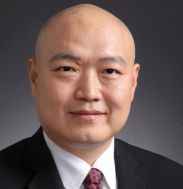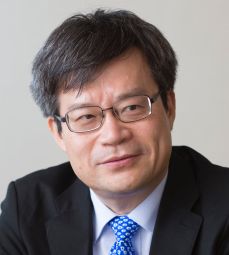KEYNOTE SESSION
Tuesday, May 22 8:20 – 10:20 am
Los Angeles Convention Center, Petree Hall
Chair: Cheng Chen, Apple Inc. |
| Event |
Speaker |
Picture |
| OLED Leading to the New Experience of Display |
Deqiang Zhang, Ph.D.
CEO, Visionox
|
 |
Thirty-one years ago, Dr. Ching W. Tang and Steven Van Slyke from Kodak made a historic technology breakthrough, building the first practical organic light-emitting diode (OLED) device. Today, advancements in OLED have made it possible to construct flexible displays, ushering in an era of “Ubiquitous Screens.” As the rapidly developing Internet, IOT, 5G, cloud computing, etc., have already made the “Internet of Everything” become a reality, displays (especially flexible OLED displays) will play a significant role in this technological revolution.
Deqiang Zhang is a graduate of Tsinghua University and held various management roles at Visionox before becoming the company’s CEO. His field of research is organic optoelectronics. Dr. Zhang has devoted himself to the research and development of OLED process technology, the construction of OLED mass production lines, and product planning in China for 22 years, promoting the industrialization of OLED. He has published over 20 OLED research papers and holds over 30 OLED patents. He received first place in China's coveted “National Award for Technological Invention” in 2011. |
| Reactive Displays: Unlocking Next-Generation VR/AR Visuals with Eye Tracking |
Douglas Lanman, Ph.D.
Director of Computational Imaging
Oculus Research |
 |
As personal viewing devices, head-mounted displays offer a unique means to rapidly deliver richer visual experiences than past direct-view displays occupying a shared environment. Viewing optics, display components, and sensing elements may all be tuned for a single user. It is the latter element that helps differentiate from the past, with individualized eye tracking playing an important role in unlocking higher resolutions, wider fields of view, and more comfortable visuals than past displays. This talk will explore the “reactive display” concept and how it may impact VR/AR devices in the coming years.
Douglas Lanman is the director of computational imaging at Oculus Research, where he leads investigations into advanced display and imaging technologies. His prior research has focused on head-mounted displays, glasses-free 3D displays, light-field cameras, and active illumination for 3D reconstruction and interaction. He received a B.S. in applied physics with honors from Caltech in 2002 and M.S. and Ph.D. degrees in electrical engineering from Brown University in 2006 and 2010, respectively. He was a senior research scientist at NVIDIA Research from 2012 to 2014, a postdoctoral associate at the MIT Media Lab from 2010 to 2012, and an assistant research staff member at MIT Lincoln Laboratory from 2002 to 2005. |
| Blue LEDs and Transformative Electronics for Developing Sustainable Smart Society |
Hiroshi Amano, Ph.D.
Nobel Laureate
Director, Center for Integrated Research of Future Electronics
Professor, Institute of Materials and Systems for Sustainability
Nagoya University |
 |
In Japan, the total emission of greenhouse gases decreased from 1.393 billion tons CO2 equivalent (BtCO2) in 2005 to 1.321 BtCO2 in 2015, which is a 0.53 percent reduction per year. If this rate of reduction continues, we can expect the emission in 2030 to be 1.22 BtCO2. On the basis of the Paris Agreement, the government of Japan has set targets for the total emission of greenhouse gases of 1.07 BtCO2 in 2030 and 0.29 BtCO2 in 2050. GaN and the related group III nitride semiconductors InGaN, AlGaN, AlInN and AlInGaN, the so-called III nitrides, are one of the most promising material systems for contributing to the reduction of greenhouse gases emissions. By 2020, more than 70 percent of general lighting systems in Japan, traditionally based on conventional incandescent lamps or fluorescent lamps, will have been replaced with LED lamps, by which the total electricity consumption can be reduced by about seven percent. We are trying to accelerate the reduction of CO2 emission by developing new display systems using nanorod technology. Details of the recent development of all nitride-based and nanorod LED displays will be discussed. This work was supported by Aichi, JSPS, GIST, and GRL, Korea.
Hiroshi Amano received a doctor of engineering from Nagoya University. Currently, he is a director at the Center for Integrated Research of Future Electronics and a professor for the Institute of Materials and Systems for Sustainability at Nagoya University. He shared the 2014 Nobel Prize in Physics with Professor Isamu Akasaki and Professor Shuji Nakamura “for the invention of efficient blue light-emitting diodes which has enabled bright and energy-saving white light sources.” |